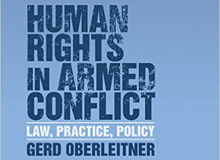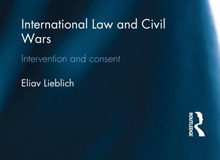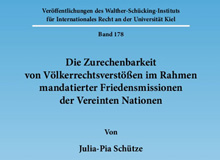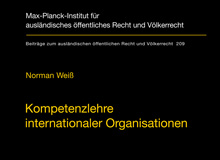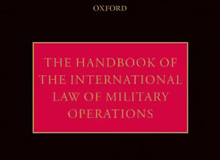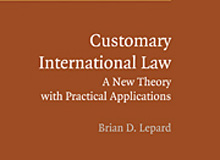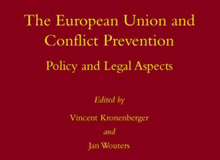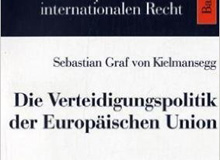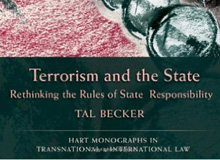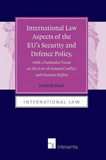
International Law Aspects of the EU’s Security and Defence Policy, With a Particular Focus on the Law of Armed Conflict by Frederik Naert [Antwerp: Intersentia, 2010. xxviii + 682pp. Hard cover. ISBN 978-90-5095-771-7. Price €125]
Over the past decade, the EU has gradually established itself as an increasingly active and capable contributor to international peace and security. Since 2003, the Union has launched over twenty military and civilian crisis management missions carrying out various peacekeeping tasks in the territory of third States. These have ranged from small advisory missions comprising a handful of civilian experts to large-scale military operations conducted under the auspices of the United Nations. Although several monographs and edited volumes have already been published on the legal aspects of EU crisis management, the majority of these are concerned with constitutional and institutional matters, paying only limited attention to questions raised by the conduct of EU operations under general public international law. By contrast, the present work by Frederik Naert, a member of the Legal Service of the Council of the EU, is devoted entirely to the international law aspects of EU crisis management and as such deserves close attention.
The book falls into three main parts. Part I sets the scene: it reviews the historical development of European defence cooperation since the end of World War II, provides a comprehensive overview of all EU operations launched since 2003 and discusses the key legal features and scope of the European Security and Defence Policy (ESDP). This section of the book, more than any other aspect, betrays the fact it is based on a doctoral thesis unconstrained by word limits: Part I is for the most part, as the author himself admits, somewhat descriptive in nature. Readers unfamiliar with the background and legal framework of the ESDP will no doubt benefit from the narrative; it is after all a gripping story competently told. However, those already well-versed in these matters may wish to concentrate on the author’s conclusions in Chapter 4. According to Naert, the ESDP and its successor, the Common Security and Defence Policy (CSDP), is best described as a common security policy with a civilian and a military component, rather than a common defence policy proper. As Naert convincingly argues, a common defence continues to fall outside the scope of the CSDP, since the mutual assistance clause contained in Article 27(7) TEU-Lisbon appears to leave the Member States a choice as to how they assist another Member State subject to armed aggression on its territory. An analysis of the relevant treaty provisions and the EU’s recent practice nevertheless shows that the activities which do fall within the scope of the CSDP—the conduct of crisis management operations in the territory of third States—also come within the ambit of the law of armed conflict and international human rights law. This, then, raises the main research question posed in the present book: is the EU subject to obligations under the law of armed conflict and international human rights law independently from its Member States?
Before turning to this question, Part II examines a preliminary matter: to what extent and how are international organizations in general and the EU in particular bound by international law? While there is broad agreement in the literature and in practice that international organizations must respect international law, there is disagreement about the basis and extent of this duty. This leads to uncertainty in the application of specific international norms. Naert helpfully distinguishes between three sets of obligations in this respect. Commitments undertaken by international organizations in their own right are clearly binding upon them. For example, when the EU becomes a party to the European Convention on Human Rights, it will be bound by that instrument directly under international law. International organizations must also adhere to any international obligations imposed upon them by their Member States in their constituent instruments. For instance, Article 3(5) TEU-Lisbon directs the EU to contribute to the ‘strict observance and the development of international law, including respect for the principles of the United Nations Charter.’ By contrast, there is little evidence to suggest that international organizations are bound by agreements concluded by their Member States by way of functional succession—the ECJ’s finding in International Fruit that the EC must comply with the relevant provisions of the GATT is exceptional. Finally, it is generally accepted that international organizations are bound by customary international law to the extent that the latter is relevant to their activities and competences. The international legal status of the EU has long been the subject of debate. The Treaty of Lisbon has now settled this controversy by endowing the EU with legal personality and certain international legal capacities in express terms. The Union is therefore capable of incurring international obligations just like any other international organization which constitutes an independent legal person under international law. Such obligations may derive from a variety of sources, including treaties to which the EU is a party, customary international law, certain unilateral acts and the general principles of law forming part of international law.
Armed with these conclusions, Part III turns to the substantive law applicable in ESDP operations. As Naert explains, the main body of the law of armed conflict does not apply to military forces at all times, but governs their conduct only when they are actively engaged in armed hostilities or belligerent occupation. This is a basic but important point to remember, for it means that the majority of EU crisis management operations are not be subject to the law of armed conflict. According to Naert, international human rights law should therefore be seen as a more important and appropriate regulatory framework for EU deployments. However, in those situations where the law of armed conflict does apply (EU operations have engaged hostile forces in the past), the EU has proper obligations under customary international law to comply with the relevant rules as a consequence of its separate international legal personality. In addition, Naert argues that a duty to comply with the law of armed conflict may also be derived from the general principles of EU law and the EU’s obligation to respect human rights, at least to the extent that the latter incorporates parts of the law of armed conflict. In this regard, the author rejects the view that international human rights law is displaced by the law of armed conflict. Rather, he calls upon the EU to accept and indeed advocate the applicability of human rights law to EU crisis management missions in such a manner that takes due account of the fact that such operations do not take place under ordinary peace-time conditions. Although human rights law is applicable to EU forces at all times, certain human rights norms may be subject to derogations and exceptions resulting, inter alia, from the applicable Security Council resolutions or the concurrent applicability of the law of armed conflict.
Academic publishing, like most aspects of life, knows its trends and fashions. In the UK, our collective quest to publish work that is ‘world-leading in terms of originality, significance and rigour’ seems to leave little time and appetite for writing books that do not attempt to set in motion a paradigm shift in their respective fields of study. The monograph under review here is one such book: its goal is to determine what rules of international law are applicable to the conduct of ESDP operations without causing a scientific revolution. While such an ominous lack of ambition may not win an author much favour with university managers in the UK, the truth is that this is an excellent book nonetheless. The author’s general conclusion that the EU has distinct rights and obligations under international law, including in the field of the law of armed conflict and human rights law, will not raise many eyebrows, yet the strength of the monograph lies in the fact that it sets out the reasons for this conclusion comprehensively and with great authority. Indeed, establishing conclusively that the EU is bound by the law of armed conflict and human rights law whenever it acts in the context of the CSDP is a necessary precondition for moving the debate on to more pressing questions, above all the extent of this duty to comply with international law. This is where the real difficulties lies, as the controversy surrounding the European Court of Human Rights’ decision in the Behrami case demonstrates.
Naert’s position that the EU should proactively engage with human rights concerns that may arise in the context of ESDP operations has much to commend it. Not only is this in line with the international image which the EU seeks to project about itself as a promoter and defender of international law and human rights, but such an engagement may help to sway the Court of Justice and the European Court of Human Rights to accept more readily claims that the Union and its Member States provide sufficient safeguards to those affected by EU operations. Overall, this is a cogently argued and meticulously researched monograph that relies on a truly impressive range of primary and secondary sources. This, together with its accessible structure, makes the book particularly useful as a work that one not only reads, but repeatedly consults for advice.
This review has been published in the European Law Review.

